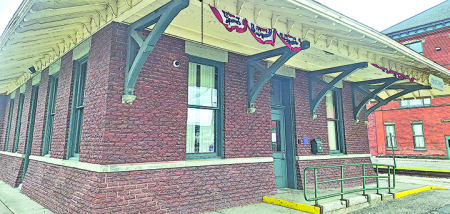Tilting At Windmills: A Glorious Error
Published:
January 19th, 2024
By:
Shelly Reuben

“...the elms bent to one another, like giants who were whispering secrets.” Charles Dickens. 1812 - 1870
I was at the age when children, on dry, hot summer days, put eagle feathers in their hair and do rain dances in imitation of the ones we had seen in old Western movies on TV.
That particular morning, however, wasn’t dedicated to making rain. It was a rare and delicious episode from childhood when my father – a city boy raised in the cement and asphalt architecture of Chicago’s South Side – decided to become Paul Bunyan and singlehandedly chop down the dying elm tree in our front yard.
Before I delve further into that sweet memory, let me tell you a bit about these elegant giants. So beautifully did they create leafy canopies over America’s small towns that they inspired art, literature, and poetry ... even to a series of horror movies about terrible things happening on what was meant to be a quiet, safe, tree-lined street.
I’ll start my story with its terrible ending, but I’ll keep it short because this is so depressing.
Sometime in the 1930s, the Dutch elm disease – a fungus first identified by researchers in the Netherlands – arrived at the factory of an Ohio furniture-maker in lumber embedded with the European bark beetle. After beetles infected their first tree, the fungus spread like a rampaging Angel of Death to healthy trees nearby and from there to elms everywhere in the U.S.A.
As soon as the Dutch elm disease and its cause were discovered, Herculean efforts, mostly to no avail, were made to kill the beetles, defeat the fungus, and save the trees. From 1930 until now, organizations like The Nature Conservancy, the USDA Forest Service, the US Department of Agriculture, and others, have worked heroically and tirelessly to repopulate cities, towns, and the countryside with newly created, disease-resistant elms.
Okay. That’s it. I’m more or less done with death.
Now, I’ll give you a glimpse of what it was like before elm trees disappeared. When they inspired heterogeneous people in towns and cities across the land to achieve nothing less than sublime municipal beauty ... and made an entire nation’s heart sing.
First, a few facts:
The elm has been around so long, it can be traced back as far as 20 million years.
In its heyday, not only did elms thrive in cities and in the countryside, they also did serious work in preventing erosion on riverbanks.
An elm can grow up to two feet a year (oh, my!) and reach heights over 100 feet. To put that in perspective, 100 feet is the equivalent of half a hockey rink or a 10-story building.
A mature elm’s trunk could have a 10 to 12 foot diameter trunk, which is about the width of a pool table.
One elm tree in New York State, according to The Arbor Day Foundation, is over 650 years old, which means that it was planted before Columbus discovered America.
Now I’m going to ignore the million more elm-related details I could be conveying, and quote from a 2003 Los Angeles Times article written by Witold Rybcznski (I dare you to try and pronounce that!) describing “The Republic of Shade,” a book about elms by Thomas J. Campanella.
According to Rybcznski, in the town of Sheffield, Massachusetts, over a two-week period starting in May 1846, “volunteers planted more than 1,000 street elms” to create “a vast tunnel of dappled shade.” When Charles Dickens saw the effect, he described it as “a kind of compromise between town and country; as if each had met the other half-way and shaken hands upon it.” Over the following years, the entire country followed suit, and by 1934, more than 25 million elms had been planted “in suburbs, cities and towns nationwide, and elm-lined streets became as distinctive a mark of American urbanism as boulevards in France or piazzas in Italy.”
Which brings us back to the question of why these marvelous trees died.
Sadly (who knew?) elms, inherently solitary, were not designed by nature to grow in groups. Because of that man-made proximity, when the Dutch elm disease arrived, it created “an ecological catastrophe unparalleled in American history,” ultimately depriving us of over 40 million trees.
Campanella’s conclusion? That “however well intentioned, the Yankee tree planters of the past committed a grave error in planting their cherished elms as far as the eye could see.”
The elm tree in the front yard of my childhood home died in the early 1960s. I have no memory of what happened to its earthly remains, but I distinctly remember shouting “Timber” as my father’s axe struck the last blow against its trunk, and I remember how it gracefully thundered down. I also remember the empty space on the lawn where that beautiful shade tree once had been.
Campanella ends his book about the passionate, tree-loving Americans who planted millions of elms between 1786 and 1800 with words that actually brought tears to my eyes.
“What a glorious error it was!” he wrote. “And what magic, what magnificence, their recklessness bestowed.”
Copyright © Shelly Reuben, 2024. Shelly Reuben’s books have been nominated for Edgar, Prometheus, and Falcon awards. For more about her writing, visit www.shellyreuben.com
Author: Shelly Reuben - More From This Author
Comments










